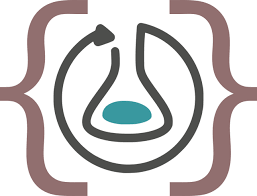Final - Modeling Breast Cancer Subtypes + TABPFN
statistics-flexynesis_classification/main-workflow
Launch in Tutorial Mode
question
galaxy-download Download
galaxy-download Download
flowchart TD 0["ℹ️ Input Dataset\nclin_train"]; style 0 stroke:#2c3143,stroke-width:4px; 1["ℹ️ Input Dataset\nclin_test"]; style 1 stroke:#2c3143,stroke-width:4px; 2["ℹ️ Input Dataset\ngex_train"]; style 2 stroke:#2c3143,stroke-width:4px; 3["ℹ️ Input Dataset\ngex_test"]; style 3 stroke:#2c3143,stroke-width:4px; 4["ℹ️ Input Dataset\ncna_train"]; style 4 stroke:#2c3143,stroke-width:4px; 5["ℹ️ Input Dataset\ncna_test"]; style 5 stroke:#2c3143,stroke-width:4px; 6["ℹ️ Input Parameter\nnumber of features to keep"]; style 6 fill:#ded,stroke:#393,stroke-width:4px; 317be0d5-bbba-4f29-95b3-d7c58c2736b3["Output\n"]; 6 --> 317be0d5-bbba-4f29-95b3-d7c58c2736b3; style 317be0d5-bbba-4f29-95b3-d7c58c2736b3 stroke:#2c3143,stroke-width:4px; 7["ℹ️ Input Parameter\nPerforme TABPFN?"]; style 7 fill:#ded,stroke:#393,stroke-width:4px; 865c8339-1baa-42cd-a096-a5f159ae5221["Output\n"]; 7 --> 865c8339-1baa-42cd-a096-a5f159ae5221; style 865c8339-1baa-42cd-a096-a5f159ae5221 stroke:#2c3143,stroke-width:4px; 8[" Flexynesis niter1"]; 5 -->|output| 8; 4 -->|output| 8; 1 -->|output| 8; 3 -->|output| 8; 0 -->|output| 8; 2 -->|output| 8; 9[" Flexynesis niter5"]; 5 -->|output| 9; 4 -->|output| 9; 1 -->|output| 9; 3 -->|output| 9; 0 -->|output| 9; 2 -->|output| 9; b0c3401f-ab62-49f2-a314-30a4ec36155c["Output\nflexynesis output"]; 9 --> b0c3401f-ab62-49f2-a314-30a4ec36155c; style b0c3401f-ab62-49f2-a314-30a4ec36155c stroke:#2c3143,stroke-width:4px; 6d26fdb7-6fb0-403d-a484-7b0abdb5bd67["Output\nembedding plots pca"]; 9 --> 6d26fdb7-6fb0-403d-a484-7b0abdb5bd67; style 6d26fdb7-6fb0-403d-a484-7b0abdb5bd67 stroke:#2c3143,stroke-width:4px; 10["🛠️ Subworkflow\nPrepare data for TABPFN"]; style 10 fill:#edd,stroke:#900,stroke-width:4px; 6 -->|output| 10; 1 -->|output| 10; 3 -->|output| 10; 0 -->|output| 10; 2 -->|output| 10; 7 -->|output| 10; b93c8cbe-538d-4875-96b6-2073943f3f65["Output\n"]; 10 --> b93c8cbe-538d-4875-96b6-2073943f3f65; style b93c8cbe-538d-4875-96b6-2073943f3f65 stroke:#2c3143,stroke-width:4px; 11["🛠️ Subworkflow\nPrepare data for TABPFN"]; style 11 fill:#edd,stroke:#900,stroke-width:4px; 6 -->|output| 11; 1 -->|output| 11; 5 -->|output| 11; 0 -->|output| 11; 4 -->|output| 11; 7 -->|output| 11; 8b726af8-7712-453e-b987-2e549248089c["Output\n"]; 11 --> 8b726af8-7712-453e-b987-2e549248089c; style 8b726af8-7712-453e-b987-2e549248089c stroke:#2c3143,stroke-width:4px; 12["Extract prediction table - niter1"]; 8 -->|results| 12; 13["Extract test embeddings - niter1"]; 8 -->|results| 13; 14["Extract prediction table - niter5"]; 9 -->|results| 14; 15["Extract test embeddings - niter5"]; 9 -->|results| 15; 16["Pick parameter value"]; 10 -->|ready_train| 16; 17["Pick parameter value"]; 10 -->|ready_test| 17; 18["Pick parameter value"]; 11 -->|ready_train| 18; 19["Pick parameter value"]; 11 -->|ready_test| 19; 20["Sort"]; 12 -->|output| 20; 21["Sort"]; 14 -->|output| 21; 22["PR cruve plot - flexynesis"]; 14 -->|output| 22; c64e7cb2-2e54-4176-a914-b5b291c3f8da["Output\nPR curve - Flexynesis"]; 22 --> c64e7cb2-2e54-4176-a914-b5b291c3f8da; style c64e7cb2-2e54-4176-a914-b5b291c3f8da stroke:#2c3143,stroke-width:4px; 23["TABPFN on gex data 2"]; 17 -->|data_param| 23; 16 -->|data_param| 23; cc9c63af-9aca-4030-9e5a-f196d30c849d["Output\nTABPFN predictions - gex"]; 23 --> cc9c63af-9aca-4030-9e5a-f196d30c849d; style cc9c63af-9aca-4030-9e5a-f196d30c849d stroke:#2c3143,stroke-width:4px; 5f9a68f4-fa2c-400e-b78b-8b2bba3c7b91["Output\nPR curve - TABPFN - gex"]; 23 --> 5f9a68f4-fa2c-400e-b78b-8b2bba3c7b91; style 5f9a68f4-fa2c-400e-b78b-8b2bba3c7b91 stroke:#2c3143,stroke-width:4px; 24["TABPFN on cna data 2"]; 19 -->|data_param| 24; 18 -->|data_param| 24; 229fd7b2-f8b8-4257-919c-550c2154c689["Output\nPR curve - TABPFN - cna"]; 24 --> 229fd7b2-f8b8-4257-919c-550c2154c689; style 229fd7b2-f8b8-4257-919c-550c2154c689 stroke:#2c3143,stroke-width:4px; e99d56b0-8486-4344-9fdc-78ac8f92402e["Output\nTABPFN predictions - cna"]; 24 --> e99d56b0-8486-4344-9fdc-78ac8f92402e; style e99d56b0-8486-4344-9fdc-78ac8f92402e stroke:#2c3143,stroke-width:4px; 25["Flexynesis plot"]; 13 -->|output| 25; 20 -->|outfile| 25; 1bd99aab-3844-4496-9597-bb7e49258f66["Output\nembedding plot umap - niter1"]; 25 --> 1bd99aab-3844-4496-9597-bb7e49258f66; style 1bd99aab-3844-4496-9597-bb7e49258f66 stroke:#2c3143,stroke-width:4px; 26["UMAP plot on test embeddings"]; 15 -->|output| 26; 21 -->|outfile| 26; 69108048-9068-4c4f-b8bf-b422b0d31625["Output\nembedding plot umap - niter5"]; 26 --> 69108048-9068-4c4f-b8bf-b422b0d31625; style 69108048-9068-4c4f-b8bf-b422b0d31625 stroke:#2c3143,stroke-width:4px;
Inputs
| Input | Label |
|---|---|
| Input dataset | clin_train |
| Input dataset | clin_test |
| Input dataset | gex_train |
| Input dataset | gex_test |
| Input dataset | cna_train |
| Input dataset | cna_test |
| Input parameter | number of features to keep |
| Input parameter | Performe TABPFN? |
Outputs
| From | Output | Label |
|---|---|---|
| Input parameter | number of features to keep | |
| Input parameter | Performe TABPFN? | |
| toolshed.g2.bx.psu.edu/repos/bgruening/flexynesis/flexynesis/0.2.20+galaxy3 | Flexynesis | Flexynesis niter5 |
| Prepare data for TABPFN | ||
| Prepare data for TABPFN | ||
| toolshed.g2.bx.psu.edu/repos/bgruening/flexynesis_plot/flexynesis_plot/0.2.20+galaxy3 | Flexynesis plot | PR cruve plot - flexynesis |
| toolshed.g2.bx.psu.edu/repos/bgruening/tabpfn/tabpfn/2.0.9+galaxy0 | Tabular data prediction using TabPFN | TABPFN on gex data 2 |
| toolshed.g2.bx.psu.edu/repos/bgruening/tabpfn/tabpfn/2.0.9+galaxy0 | Tabular data prediction using TabPFN | TABPFN on cna data 2 |
| toolshed.g2.bx.psu.edu/repos/bgruening/flexynesis_plot/flexynesis_plot/0.2.20+galaxy3 | Flexynesis plot | |
| toolshed.g2.bx.psu.edu/repos/bgruening/flexynesis_plot/flexynesis_plot/0.2.20+galaxy3 | Flexynesis plot | UMAP plot on test embeddings |
Tools
To use these workflows in Galaxy you can either click the links to download the workflows, or you can right-click and copy the link to the workflow which can be used in the Galaxy form to import workflows.
Importing into Galaxy
Below are the instructions for importing these workflows directly into your Galaxy server of choice to start using them!Hands On: Importing a workflow
- Click on galaxy-workflows-activity Workflows in the Galaxy activity bar (on the left side of the screen, or in the top menu bar of older Galaxy instances). You will see a list of all your workflows
- Click on galaxy-upload Import at the top-right of the screen
- Provide your workflow
- Option 1: Paste the URL of the workflow into the box labelled “Archived Workflow URL”
- Option 2: Upload the workflow file in the box labelled “Archived Workflow File”
- Click the Import workflow button
Below is a short video demonstrating how to import a workflow from GitHub using this procedure:
Video: Importing a workflow from URL
Version History
| Version | Commit | Time | Comments |
|---|---|---|---|
| 3 | 51720f0d6 | 2025-08-05 08:49:26 | update WF and test |
| 2 | 40931e556 | 2025-08-01 11:37:41 | add test |
| 1 | 839f89865 | 2025-07-31 21:02:27 | start classification |
For Admins
Installing the workflow tools
wget https://training.galaxyproject.org/training-material/topics/statistics/tutorials/flexynesis_classification/workflows/main_workflow.ga -O workflow.ga workflow-to-tools -w workflow.ga -o tools.yaml shed-tools install -g GALAXY -a API_KEY -t tools.yaml workflow-install -g GALAXY -a API_KEY -w workflow.ga --publish-workflows
 Download Workflow RO-Crate
Download Workflow RO-Crate